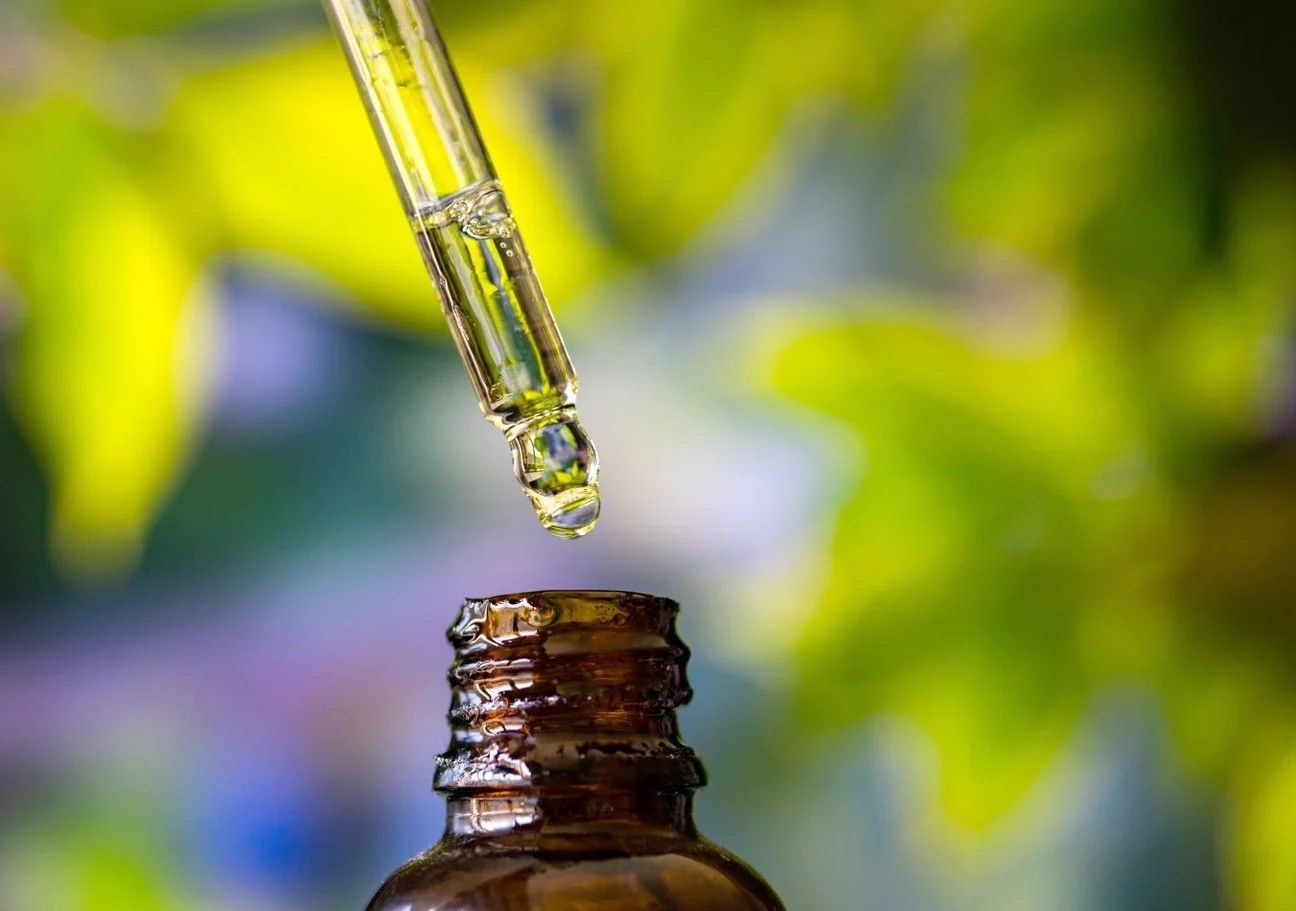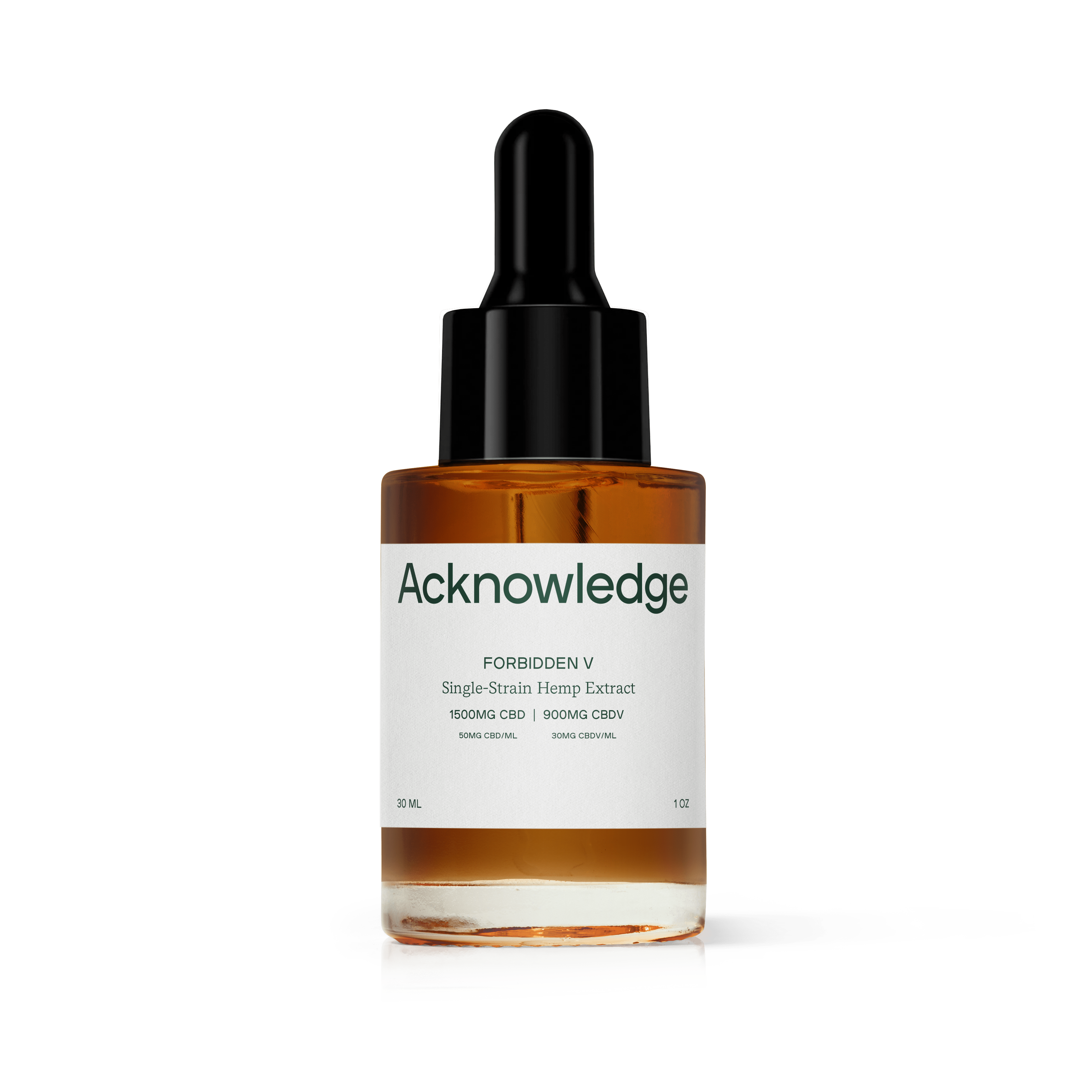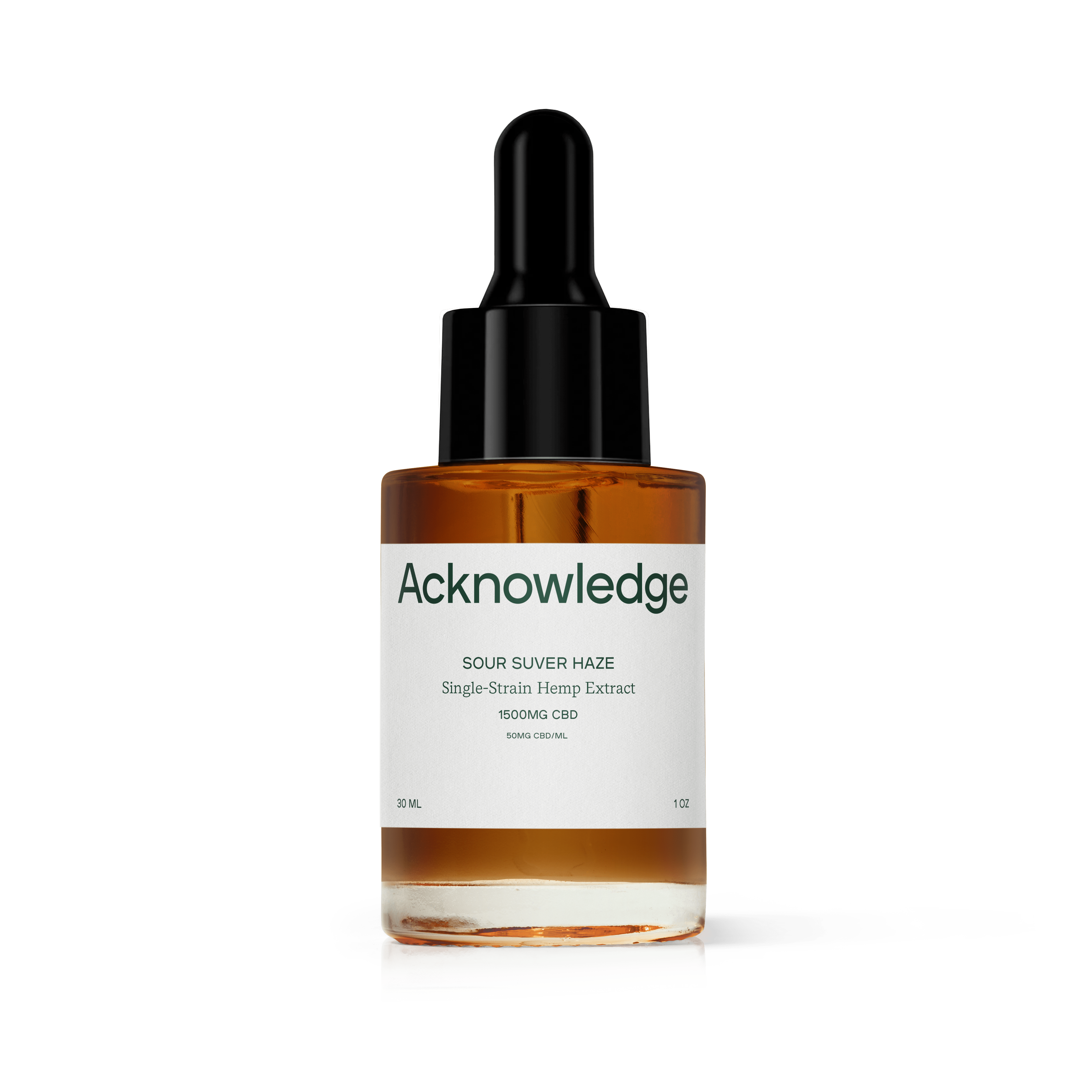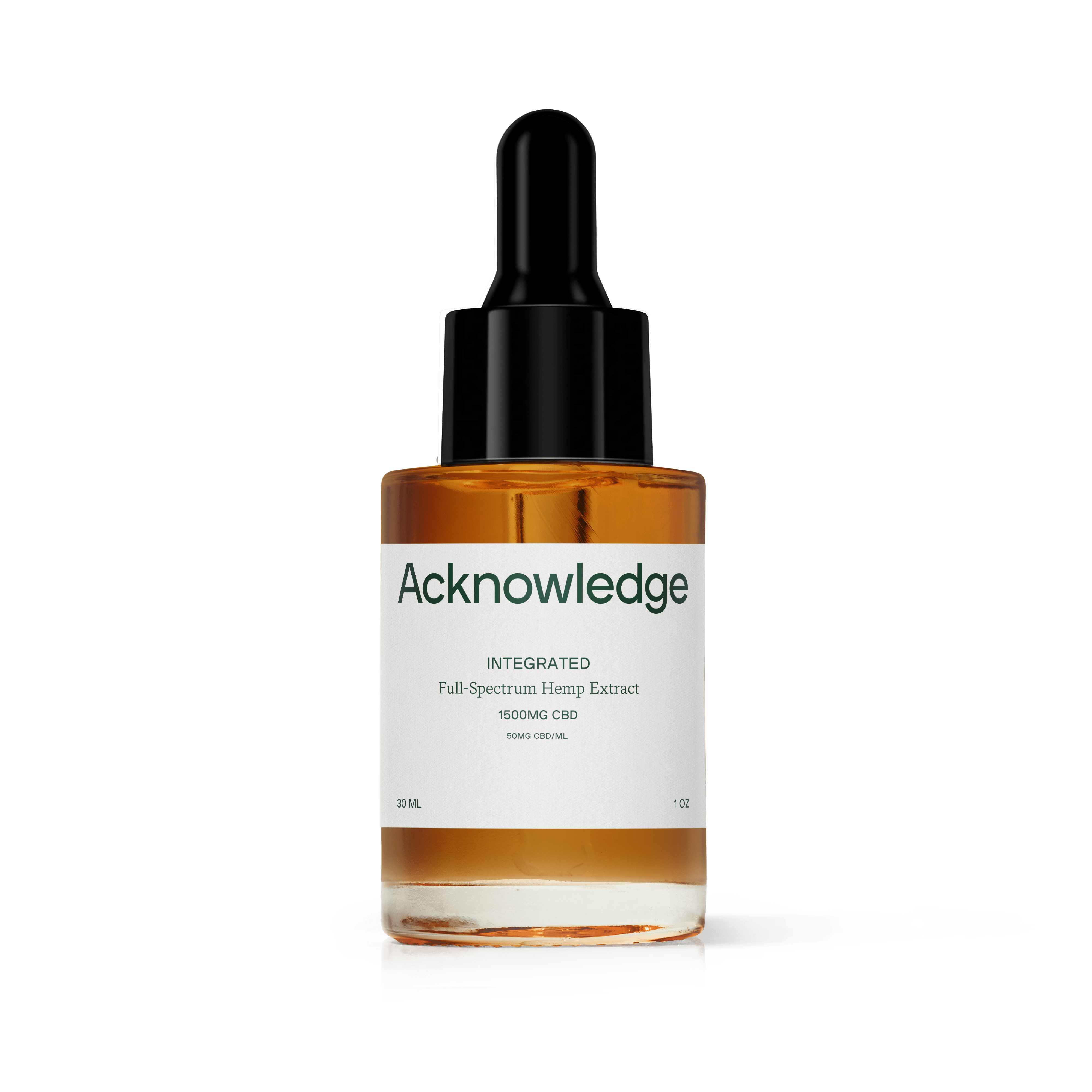
If you’re thinking about using CBD, you’ve probably come across something called “full-spectrum CBD oils.” And even if you’re already taking CBD, you may be curious about the different types of CBD oil, what is the best CBD oil, what they are, and their potential benefits. Note, that despite common misconception, CBD oil and Hemp oil are different.
This guide takes a closer look at full-spectrum CBD oil and breaks down the potency, types, and benefits of each. Here’s a quick look at what’s inside:
- What mg of full-spectrum CBD oil should I take?
- How do I know what kind of CBD oil I should take?
- What are the benefits of taking full-spectrum CBD?
- Where do I find pure CBD oil?
What Mg Of Full-Spectrum CBD Oil Should I Take?
Since CBD oil comes in all different shapes and sizes, it’s easy to dial up (or down) potency. But, with so many options, it’s tough to know which potency is “right” for you.
Many CBD brands offer 300 mg – 1500 mg potencies packaged in 15 mL – 60 mL bottles. Lots of options are a great thing, but which potency should you take? What’s the difference between 300 mg and 1500 mg?
First of all, it’s important to know that mg of CBD oil means how many mg total of CBD is in the bottle. So, a general rule of thumb is that the smaller the bottle, the higher the potency.
Let’s say you want to buy a 15 mL bottle of 300 mg CBD oil or a 30 mL bottle of 300 mg. Many of us may think that if we buy the 30 mL bottle, we’re buying twice as much of the same product. But in reality, the 30 mL bottle isn’t as potent as the 15 mL bottle since the amount of CBD per bottle hasn’t changed:
300 mg of CBD in a 15 mL bottle = 20 mg per mL
300 mg of CBD in a 30 mL bottle = 10 mg per mL
As you can see, there’s more CBD squeezed into a smaller bottle, so it has a higher potency.
Now, here’s another example. Let’s say you want to buy a 15 mL bottle of 300 mg or a 30 mL bottle of 600 mg. Which one is stronger?
300 mg of CBD in a 15 mL bottle = 20 mg per mL
600 mg of CBD in a 30 mL bottle = 20 mg per mL
Since both the total mg of CBD and the size of the bottle doubled, they’re equally as potent. So CBD oil strength comes down to BOTH mg and mL.
Now that you know how to measure potency, how do you know which potency you should take?
The answer to that comes down to you as an individual. There’s no one right answer and that’s because your body chemistry is different than everyone else’s. What’s “strong” for you may be “weak” to someone else.
Plus, most of us take CBD for a wide variety of reasons. Some of us want a little extra help falling asleep. Some of us need relief from chronic stress. And some of us are battling painful health conditions.
The amount of CBD you take depends on your body and your situation. We recommend starting “low and slow” — working your way up to stronger oils or higher doses if needed.
If you aren’t sure, talk with your doctor about which mg of CBD is best for you. Your doctor can help you safely incorporate CBD into your health routine and tell you if there are any contraindications with medications you already take.

How Do I Know What Kind Of CBD Oil I Should Take Between Full and Broad-Spectrum CBD Oil?
If you want to know what the best CBD oil is for you, then you need to understand the different types of CBD oil products. There are three kinds of CBD, two of which you’re most likely to find in an oil.
The first is full-spectrum CBD oil, a carrier oil mixed with CBD and all the other compounds found in cannabis. That includes THC, other cannabinoids, terpenes, flavonoids, and so on. In short, full-spectrum CBD has a full spectrum of cannabis compounds. All of those compounds work together, enhancing the overall effect of the product because of something called “the entourage effect.”
The second is broad-spectrum CBD products. It’s nearly identical to full-spectrum, but there’s no THC. This is great for people who want to take advantage of the entourage effect but who aren’t comfortable taking THC or can’t for any reason.
There’s another kind of CBD, called CBD isolate, but it’s more often found in crystalline or powder form. That’s because it’s “pure CBD” — there aren’t any other compounds in it. Although some oils are made with isolate, it’s much easier to find full-spectrum and broad-spectrum products.
Now that you’re familiar with the different types of CBD oil, it’s time to explore methods of delivery. There are so many ways to take CBD nowadays, from edibles to skincare and beauty products. But right now, we’re focusing on two common methods: oils and tinctures.
The terms “oil” and “tincture” are often used interchangeably, especially when it comes to CBD. That’s because they come in small little bottles, often with droppers — they look a lot alike.
But they’re technically different, and it comes down to the suspension liquid — or what’s used to dilute and/or carry the CBD.
CBD oils use carrier oils like coconut oil, hemp seed oil, or safflower oil.
CBD oil tincture uses alcohol as a carrier liquid.
So, if you’re sensitive to alcohol, perhaps try CBD oil. If you’re allergic to coconut oil, CBD tinctures may be the way to go.
Regardless of which type of CBD you choose and how you want to take it, always check the COAs before buying. A COA is a certificate of analysis, and it’s a special resort from a third-party lab that breaks down the chemical makeup of a product.
CBD brands should get their products tested, and they should make those results easy to find on their website. And it’s actually a major red flag if they don’t.
As much as we want to trust everyone on the internet, we all know that’s just not possible. Unfortunately, some companies position their products as something they aren’t. We believe it’s important you know exactly what’s going in your body — that’s why we strongly recommend you only purchase and use CBD products from transparent companies you trust.

What Are The Benefits Of Taking Full-Spectrum CBD?
Full-spectrum CBD is a type of CBD extract that contains all of the compounds naturally found in the cannabis plant, including THC, terpenes, and other cannabinoids.
This is different from broad-spectrum CBD, which contains most of the same compounds but has had the THC removed. Or CBD isolate, which contains only pure CBD.
So why choose full-spectrum CBD over other types?
One of the main benefits of full-spectrum CBD is something called the “entourage effect.” We covered this earlier, but in short, the whole is greater than the sum of its parts. All the compounds like terpenes and flavonoids in full-spectrum CBD work together, creating a more powerful product.
Research has shown that full-spectrum CBD may be more effective at reducing pain and inflammation than CBD isolate alone. It may also be better at reducing anxiety and depression, improving sleep, and even reducing the risk of certain types of cancer.
CBD is also listed as an ingredient in the FDA-approved drug Epidiolex. It’s used to treat seizures caused by two rare forms of epilepsy (Lennox-Gastaut syndrome and Dravet syndrome) in patients as young as two years old.
Other potential health benefits may include:
- Treatment for PTSD
- Treatment for opioid addiction
- Pain management for arthritis
Of course, it’s important to note that full-spectrum CBD may not be right for everyone. If you’re concerned about the potential side effects of THC, or if you’re subject to drug testing at work, you may want to opt for a different type of CBD oil.
Overall, full-spectrum CBD is a promising option for those looking to experience the full range of benefits that the cannabis plant has to offer.
Just be sure to choose a high-quality product from a reputable source. Always talk to your doctor before starting any new supplement regimen.

Where Do I Find Pure CBD Oil?
First, let’s clarify what “pure CBD oil” is.
Some people consider pure CBD oil to be CBD isolate mixed with a carrier oil like coconut or hemp seed. It’s just CBD, without anything else in the cannabis plant. No flavonoids, no THC, no terpenes.
Other people consider pure CBD oil to be an organic oil without any filler or artificial ingredients. It has cannabinoids and naturally occurring cannabis compounds — just none of the “fake” stuff or “bad” stuff.
Either way, you can find pure CBD in the most reputable brick-and-mortar CBD stores or online CBD stores. We recommend checking for and reading through a COA before buying to make sure there’s nothing else in the product. That means no other cannabinoids and no heavy metals, molds, or pesticides.
How Acknowledge CBD Products Stand Out
Many people wonder is “CBD oil safe?” While the answer to that is yes, not all products are created equal, and some are full of fillers and low-quality ingredients. At Acknowledge, our products are made responsibly and sustainably. From rich soil to grow the plant to high-quality finished products, our commitment to creating some of the best CBD oils and products on the market is second to none. Browse our selection today.
The content provided by Acknowledge CBD is for informational purposes only and is not intended as medical advice. Always consult your healthcare provider before starting any new treatment or if you have any questions regarding a medical condition. Do not disregard professional medical advice or delay seeking it based on information from this site. Reliance on any information provided by Acknowledge CBD is solely at your own risk.


